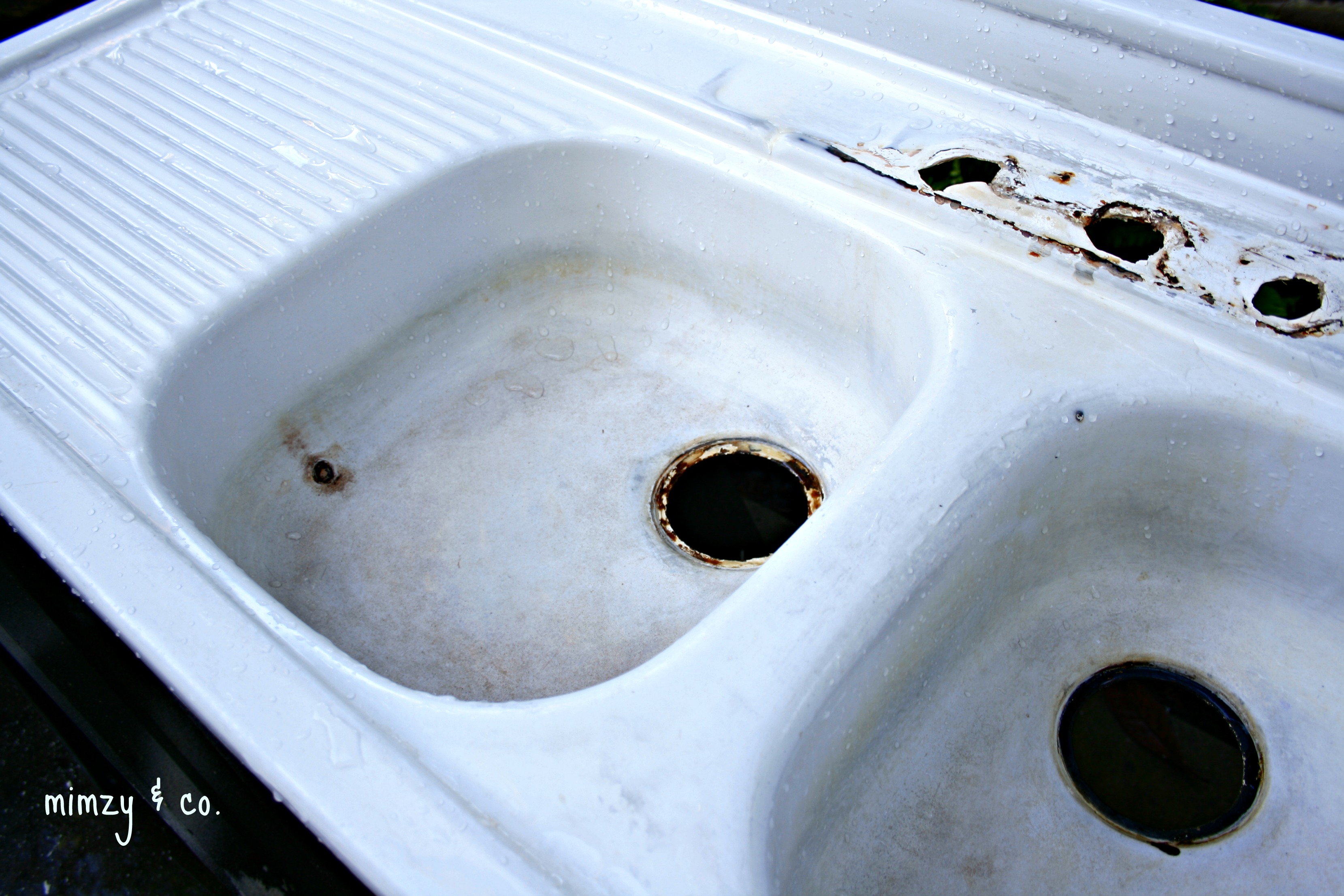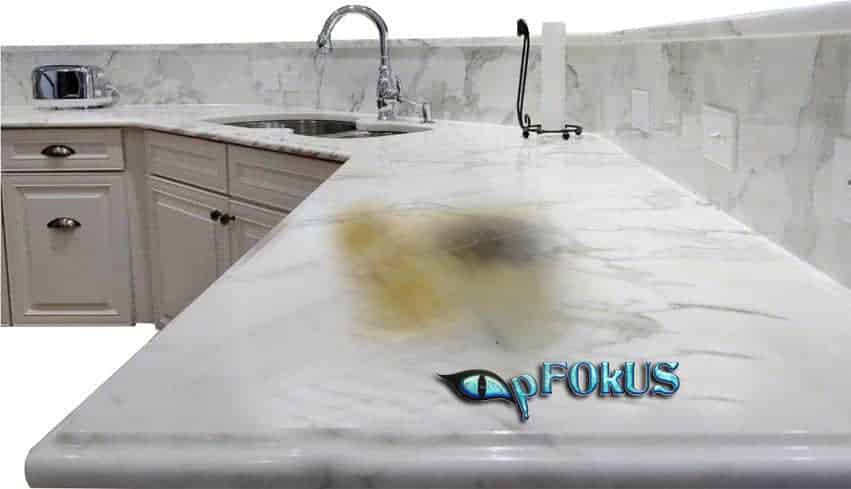If you have a vintage or antique cast iron kitchen sink, you know how charming and durable they can be. However, after years of use, these sinks can start to show signs of wear and tear. Rust, stains, and scratches can mar the surface, making your sink look old and worn out. But fear not, with a little bit of elbow grease and some simple tools and materials, you can restore your cast iron kitchen sink to its former glory. In this article, we will guide you through the process of restoring your cast iron kitchen sink, step-by-step.How to Restore a Cast Iron Kitchen Sink
Before we dive into the restoration process, it's important to know the best way to approach this project. While there are many methods and products out there for restoring cast iron, we recommend the following steps for the best and most long-lasting results:The Best Way to Restore a Cast Iron Kitchen Sink
Step 1: Clean the sink thoroughly. This may seem like an obvious first step, but it's crucial to get rid of any dirt, grime, and debris before starting the restoration process. Use a non-abrasive cleaner and a soft sponge or cloth to gently scrub the surface. Step 2: Remove any rust spots. For small rust spots, you can use a mixture of lemon juice and salt to create a paste. Apply the paste to the rust spots and let it sit for 15-20 minutes before scrubbing it off. For larger rust spots, you may need to use a rust remover product. Be sure to follow the manufacturer's instructions and wear protective gloves and eyewear. Step 3: Fill in any chips or scratches. If your sink has any chips or scratches, you can use a porcelain repair kit to fill them in. Follow the instructions on the kit and allow the repairs to fully dry before moving on to the next step. Step 4: Sand the surface. Use a fine grit sandpaper (around 400-600 grit) to gently sand the entire surface of the sink. This will help smooth out any imperfections and create a better surface for the new finish to adhere to. Step 5: Apply a new finish. For a long-lasting and durable finish, we recommend using an epoxy-based paint made specifically for cast iron surfaces. Be sure to choose a color that matches or complements your kitchen's decor. Apply the paint in thin, even coats, and allow it to fully dry between coats. You may need to apply 2-3 coats for best results. Step 6: Seal the surface. Once the paint has fully dried, you can seal the surface with a clear enamel or polyurethane. This will help protect the finish and make it easier to clean in the future.Step-by-Step Guide for Restoring a Cast Iron Kitchen Sink
Tip: If you don't want to use chemical rust remover products, you can also try using a mixture of white vinegar and baking soda. Let it sit on the rust spots for 15-20 minutes before scrubbing it off. Tip: For extra protection and shine, you can also use a car wax or metal polish on the surface of your sink. Just be sure to follow the manufacturer's instructions and avoid using abrasive cleaners or scrubbers.DIY Tips for Restoring a Cast Iron Kitchen Sink
While restoring a cast iron kitchen sink can be a DIY project, it's important to know your limits. If your sink has significant damage or you're not confident in your skills, it's best to hire a professional to do the restoration for you. This will ensure the best results and avoid any costly mistakes.Restoring a Cast Iron Kitchen Sink: What You Need to Know
To successfully restore your cast iron kitchen sink, you will need the following tools and materials: Tools: Soft sponge or cloth, sandpaper (400-600 grit), paintbrush, safety gear (gloves, eyewear). Materials: Non-abrasive cleaner, rust remover, porcelain repair kit, epoxy-based paint, clear enamel or polyurethane, car wax or metal polish.Tools and Materials for Restoring a Cast Iron Kitchen Sink
While restoring a cast iron kitchen sink may seem straightforward, there are some common mistakes that can ruin the finished result. Here are a few things to avoid: Mistake: Using abrasive cleaners or scrubbers. These can scratch the surface of your sink and make it more susceptible to damage in the future. Mistake: Skipping steps. Each step in the restoration process is important for achieving the best results. Skipping steps or rushing through the process can lead to a less-than-perfect finish. Mistake: Not using protective gear. Some of the products used in the restoration process can be harsh and may cause skin or eye irritation. Be sure to wear protective gloves and eyewear to avoid any accidents.Common Mistakes to Avoid When Restoring a Cast Iron Kitchen Sink
If your sink has stains or rust spots, it's important to address them before restoring the sink. As mentioned earlier, you can use a mixture of lemon juice and salt or a rust remover product to do this. However, prevention is key when it comes to rust. To prevent rust from forming in the first place, be sure to dry your sink after each use and avoid leaving wet sponges or dishes in the sink for extended periods of time.How to Remove Stains and Rust from a Cast Iron Kitchen Sink
Once your sink has been restored and sealed, you can maintain its shine and protect it further by using a polishing or finishing technique. As mentioned earlier, you can use a car wax or metal polish for this. Apply the product according to the manufacturer's instructions and buff it to a shine with a soft cloth.Polishing and Finishing Techniques for a Restored Cast Iron Kitchen Sink
To keep your restored cast iron kitchen sink looking its best, here are a few tips and tricks: Tip: Avoid using abrasive cleaners or scrubbers on the surface of your sink. Tip: Clean your sink regularly with a non-abrasive cleaner to prevent dirt and grime buildup. Tip: Dry your sink after each use to prevent rust and water spots. Tip: Avoid leaving wet sponges or dishes in the sink for extended periods of time. With these tips and tricks, your restored cast iron kitchen sink will continue to shine for years to come. In conclusion, restoring a cast iron kitchen sink can be a rewarding DIY project that will give new life to your vintage or antique sink. By following the steps outlined in this article and using the right tools and materials, you can achieve a beautiful and long-lasting finish. Remember to take your time and be patient, and your restored cast iron kitchen sink will be a centerpiece in your kitchen for many more years to come.Maintaining a Restored Cast Iron Kitchen Sink: Tips and Tricks
Benefits of Restoring a Cast Iron Kitchen Sink

Preserves the Authentic Look of Your Kitchen

One of the main benefits of restoring a cast iron kitchen sink is that it helps preserve the authentic look of your kitchen. Cast iron sinks have been a popular choice for kitchen design for decades and can add a touch of vintage charm to your space. By restoring your sink, you can maintain its unique and timeless aesthetic, while also making it functional for everyday use.
Cost-Effective Solution

Restoring a cast iron kitchen sink is also a cost-effective solution compared to replacing it altogether. A new cast iron sink can be quite expensive, not to mention the additional costs of hiring a professional plumber to install it. By restoring your existing sink, you can save a significant amount of money and still achieve the same end result.
Extends the Lifespan of Your Sink

With proper care and maintenance, a cast iron sink can last for decades. However, over time, the enamel coating on the sink can start to wear off, leaving it susceptible to rust and corrosion. Restoring your sink can help extend its lifespan by repairing any damage and protecting it from further wear and tear.
Environmentally-Friendly Option

Restoring a cast iron kitchen sink is also an environmentally-friendly choice. By opting to restore your sink rather than replacing it, you are reducing waste and minimizing the environmental impact of your home renovation project. Cast iron sinks are also made from natural materials, making them a more sustainable option for your kitchen.
Increases Property Value

A restored cast iron kitchen sink can also add value to your home. Many homebuyers are drawn to the vintage charm and durability of cast iron sinks, making them a desirable feature in a potential home. By restoring your sink, you are not only enhancing the look of your kitchen but also increasing the value of your property.
In conclusion, restoring a cast iron kitchen sink is a practical and cost-effective way to maintain the charm and functionality of your kitchen. It offers numerous benefits, including preserving the authentic look of your space, cost savings, extended lifespan, environmental friendliness, and increased property value. If you have a cast iron sink in your kitchen, consider restoring it to bring back its original beauty and functionality.












































































